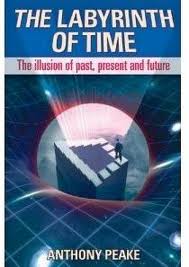Changing the Speed of Time
We may not be able to manipulate the speed of light, but by tinkering with the neural connections that indicate its passage in our brains, we may be able to alter the speed of time–or at least with how fast the human brain PERCEIVES it to be. New research suggests timekeeping in the brain is decentralized, with different neural circuits having their own timing mechanisms for specific activities.
This explains why, under certain conditions, the subjective sense of how much time has passed feels different. For instance,. time seems to drag slowly when we’re taking a test and to speed by when we’re having fun.
read more
 Ever wondered whether or not we can move through time? Could this dream actually be a reality ALREADY? Listen as Anthony Peake, the author of the Labyrinth of Time, explains some of the greatest mysteries of time in a whole new way. Ever had a time slip? Ever found yourself repeating an event? Ever wanted to see into time or even move through it?
Ever wondered whether or not we can move through time? Could this dream actually be a reality ALREADY? Listen as Anthony Peake, the author of the Labyrinth of Time, explains some of the greatest mysteries of time in a whole new way. Ever had a time slip? Ever found yourself repeating an event? Ever wanted to see into time or even move through it?